Time to get evil!
This article was originally published in RC Driver’s September 2015 issue.
By Eric Roos Photos Walter Sidas
Drifting is a segment in RC that requires full commitment on many levels to be successful. To really excel behind the wheel you need to dedicate a lot of time to practice and car setup that can often require some custom modification to get your car dialed into your style of driving. To go above and beyond in drifting, modeling skill comes into play to detail your drift machine to look exactly like a car in the full scale car world. This all put together results in an amazing RC experience which is probably why I’m so drawn to drifting. They call me Giant Drift Kid, because I’m well… tall, love drifting and have such a love for the segment I act like a kid when I’m having fun behind the wheel. Because I’m all for drift, I’m game to try out anything on four plastic wheels and the HobbyKing The Devil Drift Car grabbed my interest. The car comes as a roller and requires electronics as well as a body to get going. It’s primarily made out of plastic so its cost is freakishly low. It looks to be a machine that could help people get into the drift scene on a budget so the GDK is here to get behind the wheel and let you know what I think of The Devil Drift Car.
AT A GLANCE
WHO MAKES IT: HobbyKing
WHO IT’S FOR: Beginners
PART NUMBER: 432000136-0
HOW MUCH: $85.38
BUILD TYPE: ARTR
PROS
• Comes as a roller
• Full ball bearings included
• Front one way differential
• Locked rear differential
• Oil Filled Aluminum shocks
• CVDs on all four corners
CONS
• Durability, we sheared a CVD axle
• Excessive chassis flex
• Rear belt flipped often
REVIEWER’S OPINION
If drifting interests you, the HobbyKing The Devil Drift Car might be the right choice for you to give this type of RC a shot. The car is primarily molded of plastic, like plastic chassis, upper deck, bulkheads, arms and towers, but it does have some aluminum shocks and metal CVD’s among other components that are impressive. The car works well when doing its drift thing so if you have some electronics to toss in and a favorite drift body to buy and slap on, you’ll probably have a blast getting into drift with this machine.
TOOLS AND ACCESSORIES INCLUDED
• This is a barebones kit, you get the roller drift car in the box with a few accessories that need to be bolted on and that’s it.
ITEMS NEEDED
• Body and paint
• Radio with receiver
• Servo
• Motor and speed control
• Battery
• Charger
ITEMS USED
• Turnigy TrackStar D-Spec TS4G radio, 9572000001-0 The TrackStar D-Spec radio system with integrated gyro from Turnigy is a 2.4GHz 4 channel pistol grip (which is very comfortable to hold) with a rear LCD display and has one amazing feature; on radio gyro gain control! I absolutely loved this feature. The instruction manual is very easy to follow and makes setting up the features a snap!
• Turnigy TrackStar TS-D99X Servo, 9468000012-0 A good drifter needs a good servo and the TrackStar TS-D99X gets the job done! It’s a standard size low profile to help keep the center of gravity low. It uses dual ball bearings and a titanium gear set. With a coreless motor and .08 second transit time it has no problem changing direction for those quick switchbacks
• Turnigy TrackStar 120a Sensored (GenII) ESC, 9192000048, 9192000035 To get all this moving I went with a TrackStar 120a Sensored (GenII) ESC combine with a TrackStar 13.5 Sensored brushless motor. The ESC has very easy to follow instructions with a very easier set- up. With the default settings it has very good throttle control and equally good braking. For a more advanced user you can also purchase a programming box or USB cable and hook it up to your PC for even more fine tuning
ADDITIONAL ITEMS USED
• Turnigy Nano-tech 6.0 2S 6000mAh LiPo Pack, NC6000.2S2P.6
• DR86 Unpainted Body Kit (HobbyKing), 9320000050
• Tamiya Polycarbonate Spray Paint
HOP-UPS WE RECOMMEND
• HobbyKing doesn’t offer any hop-ups for this chassis. But the biggest changes you can make to a drifter are the tires. The tire can drastically alter the sliding characteristic of any chassis depending on driving surface. I personally like to slide on a softer compound.
FEATURE BREAKDOWN
In the breakdown of The Devil, you’ll notice a common theme; plastic. The chassis on the car is plastic, a narrow lower plate with honey-comb support to keep things light yet sturdy. The upper deck plate is also molded plastic. What was neat about the chassis set-up is it allows you to run the battery down the center or across the chassis in the back. This is great for those who want to play with how weight distribution effects handling. The bulkheads are grey plastic and there are several chassis posts that are a cool, blue anodized, machined aluminum. The chassis offers a great layout for a drifter, the front mounted motor puts most of the weight over the front wheel which is an important aspect of a drift car for maximum control.
Moving on to the suspension, you’ll find plenty more plastic starting with the suspension arms. Up front the car has narrow suspension arms that allow more clearance for the wheels to swing for more steering throw. The shock towers are plastic, too, with plenty of shock mounting locations. Speaking of shocks, the included aluminum threaded body shocks have smooth action and offer quick and easy adjustments for setup changes. The car is equipped with adjustable steel turnbuckles to adjust camber and toe. Slim front hub carriers and steering knuckles are designed for maximum throw, but be careful you don’t beat up any curbs too hard.
To get extreme steering angle, the car utilizes the R31 steering system combined with the included steel CVDs. The steering cranks and link are plastic but do the job of getting great steering angles on this entry level machine. Steering posts are included for standard size servos, but I wanted to use a shorty servo and picked up the steering post parts tree from HobbyKing with the shorter posts for a lower CG.
A triple belt driveline does the job of putting power to the front and rear of this 4WD slide machine. Steel layshafts have plastic pullies pinned to them and a nylon spur bolts to an aluminum adapter plate on the main shaft. Up front a one-way diff is used while a solid spool is used in the rear. Belt tensioning is available for all of the belts. The outdrives on the diffs are bulky and the CV axles are too. Everything rides on ball bearings which is s a great sight to see on an entry level car. The one thing I do question though is the motor plate, it’s plastic. I guess I’d just rather see an aluminum plate here since heat can build up in the motor and possible warp the plastic plate. Extended testing will determine if it’s a problem.
Since the motor is mounted up front, a slim foam bumper sits in the front bumper plates to help protect the front bulkhead and motor. As mentioned before several aluminum posts are used to shore up the bulkheads and sturdy up the chassis. An aluminum post is also included to help keep the battery in place. When mounting the battery across the chassis, the supplied battery box keeps the pack secure and you can easily access the pack by removing one clip. Then out back a rear diffuser is included to mount to the chassis. Overall I like the grey, blue, black and white tones of the materials on the cassis, it gives the car a custom look even at its budget price.
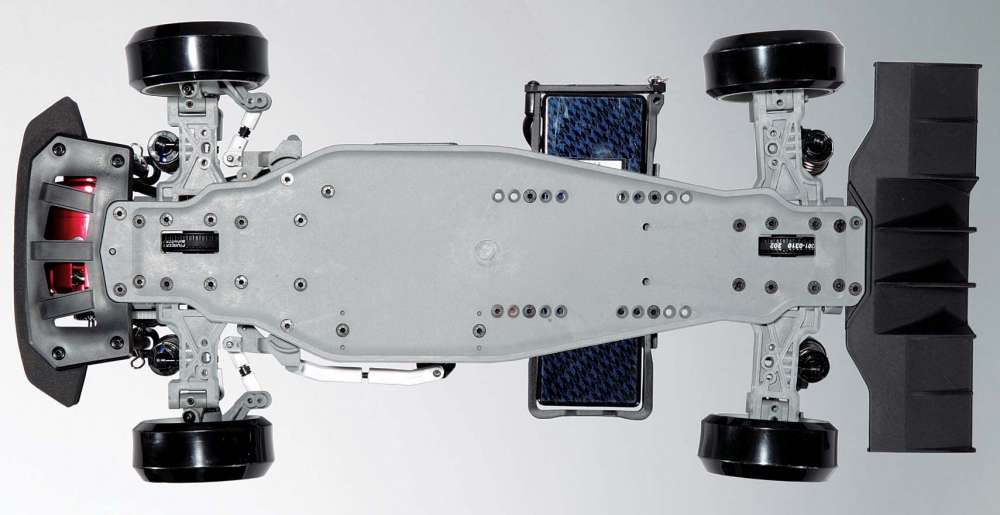
ON THE TRACK
Getting The Devil Drift Car ready to slide is a breeze; install the rear diffuser, secure the body posts and fill up the chassis with your selection of electronics and then mount up your favorite drift body. Before I knew the car was ready to get sideways! I packed my gear up and headed out to one of my favorite slide spot! That spot is a local school that has large, sweeping sidewalks with smooth transitions and plenty of parking lot sections with curbs to get the bumpers up close and personal with.
At the lot I couldn’t get out of my car fast enough to put The Devil through its paces! With a pull of the throttle and a flick of the wheel the rear end had no problem sliding out and instantly I was in love. The Devil felt smooth and responsive to my throttle and steering input. With a few practice slides transitioning from the parking lot to a sidewalk ramp, I was able to get my technique down where the car was within a half an inch of the nose tapping the curb. I then practiced some tail slide just grazing the wall. This took a few more practice runs and there were some spectacular taps that sent me into some spins, but I did manage to get a feel of the car and made some killer passes. Overall it was easy to control and maneuver the car thanks to its large steering angle. This machine is amazing for the price point. With some fine tuning on the shocks I’m sure I can get this machine up to par and sliding just like anything else I have driven. I loved watching how graceful it is and how easy it was making transitions. But towards the end of the day of my testing the unthinkable did happen. I slide into a corner that had a crack in the pavement. I guess the jolt from hitting the crack was too harsh and one of the front drive axles broke and cut my fun short. After some research this is a common issue so I would suggest buying an extra or two to minimize your down time. Overall, I had plenty of fun considering the cost of the kit was well under what many other kits cost.
for in-depth reviews on the latest RC vehicles
SPECS AND TUNING OPTIONS
DIMENSIONS
LENGTH: 17.3 in. (440mm)
WIDTH: 7.6 in. (195mm)
WHEELBASE: 10.23 in. (260mm)
WEIGHT: 2.8 lbs. (1270g)
BODY, WHEELS AND TIRES
BODY: Not included
WHEELS: White 14 spoke with 3mm offset
WHEEL ADAPTER TYPE: 12mm hex
TIRES: Hard Compound drift slicks
SUSPENSION
TYPE: 4-wheel independent
SHOCK POSITIONS: (F) 10-tower, 3-arm, (R) 6-tower, 3-arm
CAMBER: Adjustable turnbuckles
ROLL: Multiple upper link position
WHEELBASE: Fixed
RIDE HEIGHT: Adjustable droop screws
STEERING
TYPE: R31 steering system
TOE: Adjustable turnbuckles
CHASSIS
TYPE: Flat
MATERIAL: Plastic
THICKNESS: 2mm
DRIVETRAIN
TYPE: 4WD
TRANSMISSION: Belt
DIFFERENTIAL: Front one-way, locked rear
GEAR RATIO: Optional pinion gears
BEARINGS: Full set
CLUTCH TYPE: N/A
RATING TALLY
Opinion: 8
Performance – Acceleration: N/A it’s a drift car!
Performance – Steering: 8
Performance – Handling: 8
Performance – Durability: 4
Feature Breakdown: 8
Overall Value: 8
THE LAST WORD
What can I say, I am an RC drifter at heart; I have been sliding RC for over 15 years. I am amazed at how drift platforms evolved and even though they have evolved some platforms do look a lot like others. The Devil Drift car looks very similar to a high-end drifter, but there were enough variations that I didn’t mind checking this one out. The Devil is a basic, low-cost kit. It works well and should give you an idea if drifting is right for you. I feel it’s a good starter kit to make the plunge with and grow experience off of. I’ll be putting a lot more slide time into this machine in the future and have no problem letting others take the wheel to experience the drift scene.
LINKS
HobbyKing hobbyking.com
Turnigy turnigy.com
Tamiya tamiyausa.com
 RC Driver The Best In RC Car & Truck News, Reviews & Video
RC Driver The Best In RC Car & Truck News, Reviews & Video 


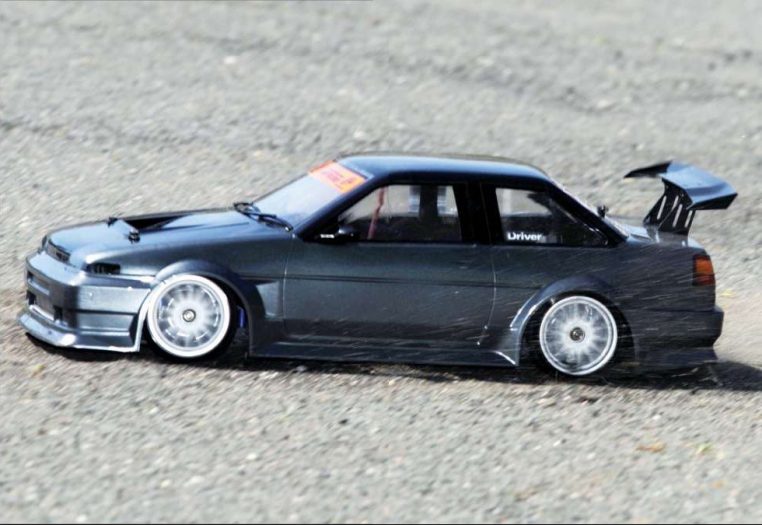
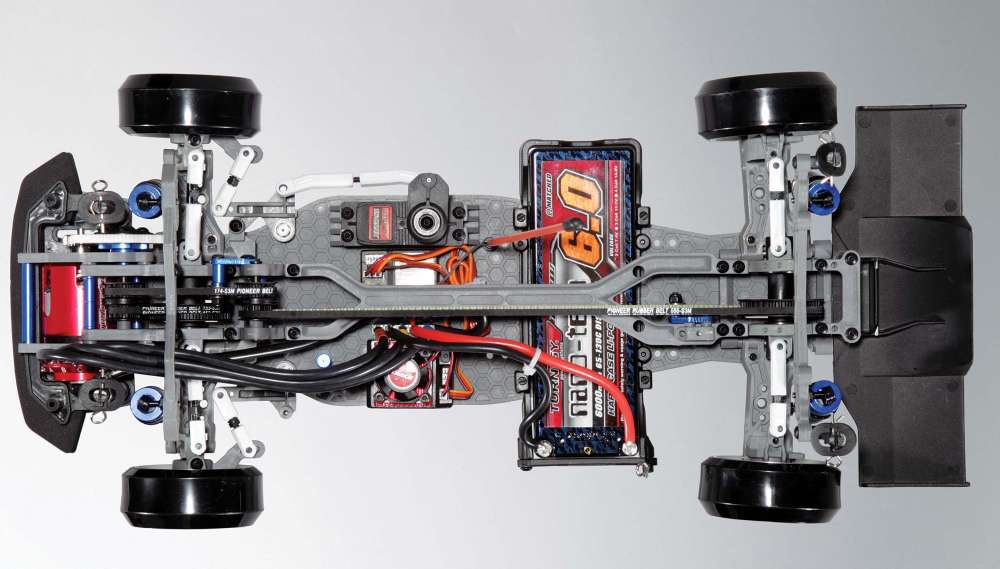
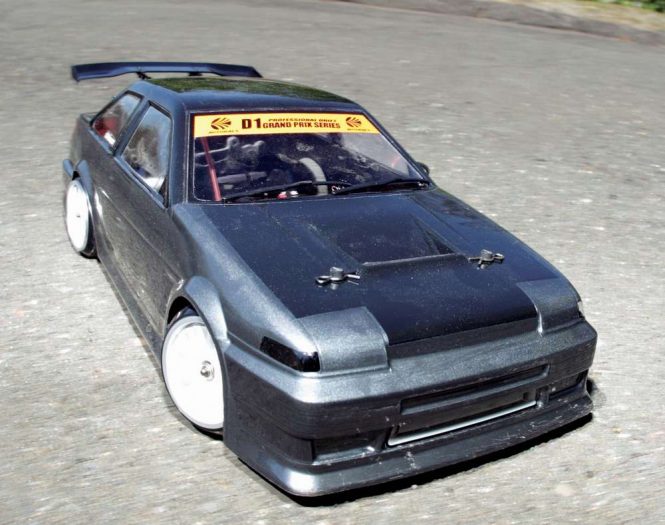
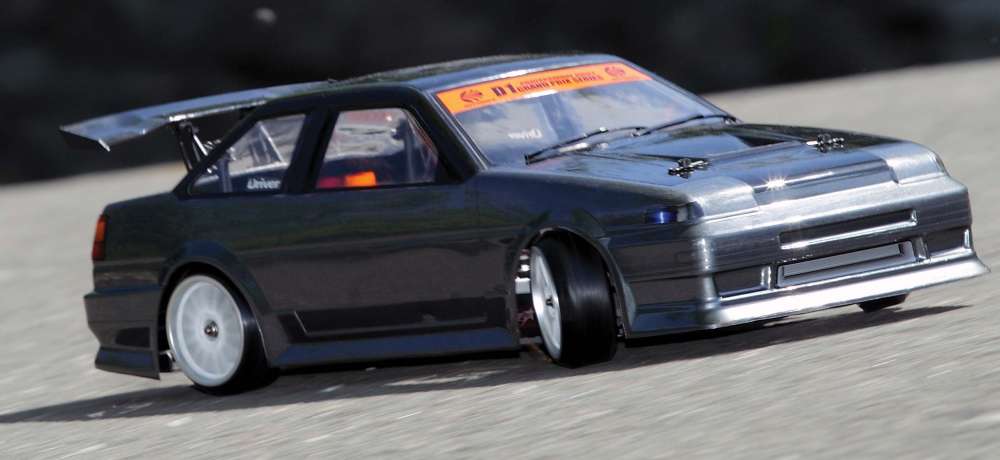
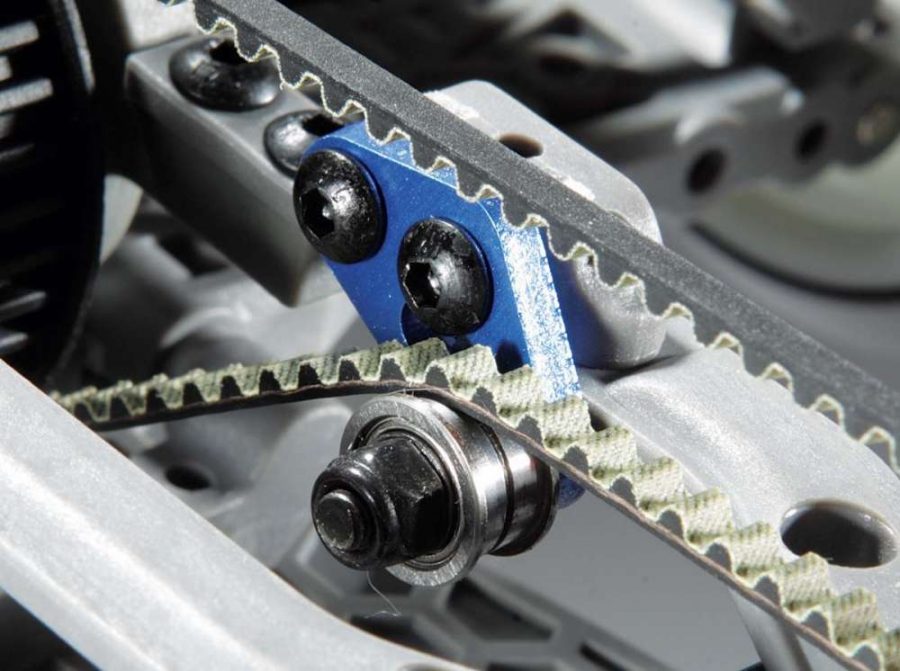
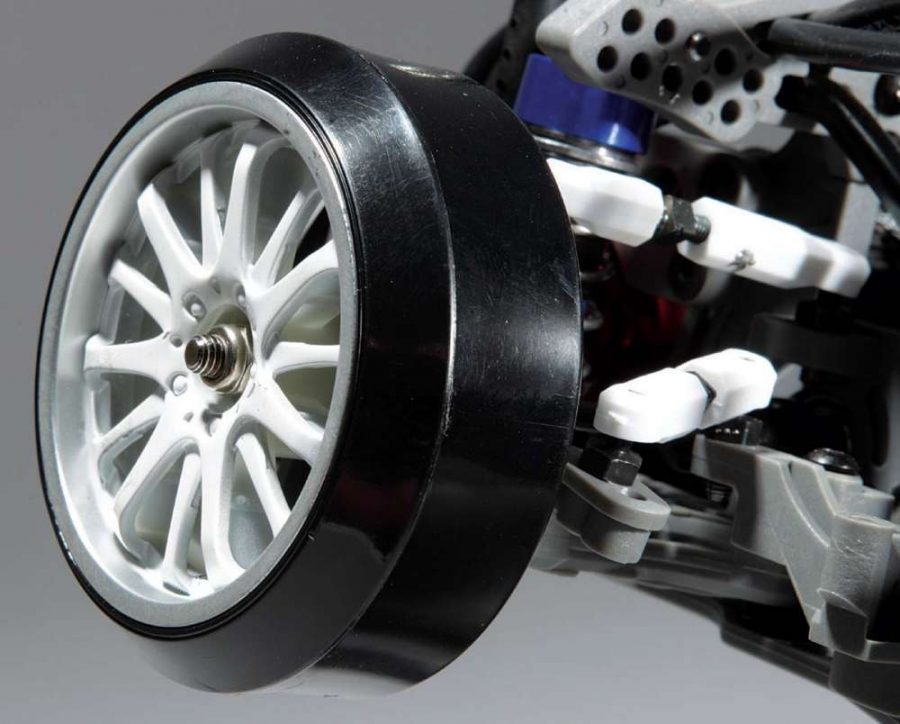
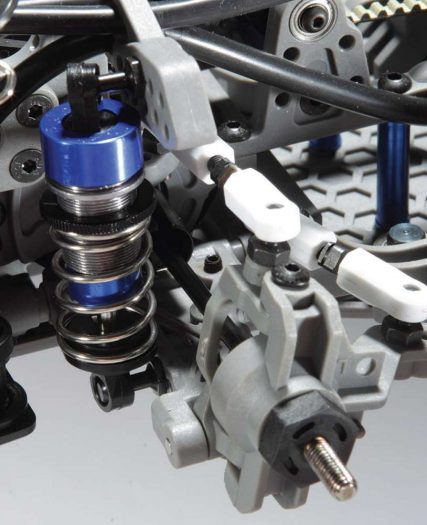
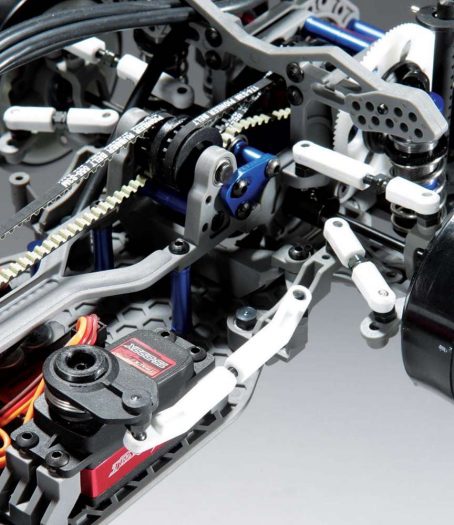
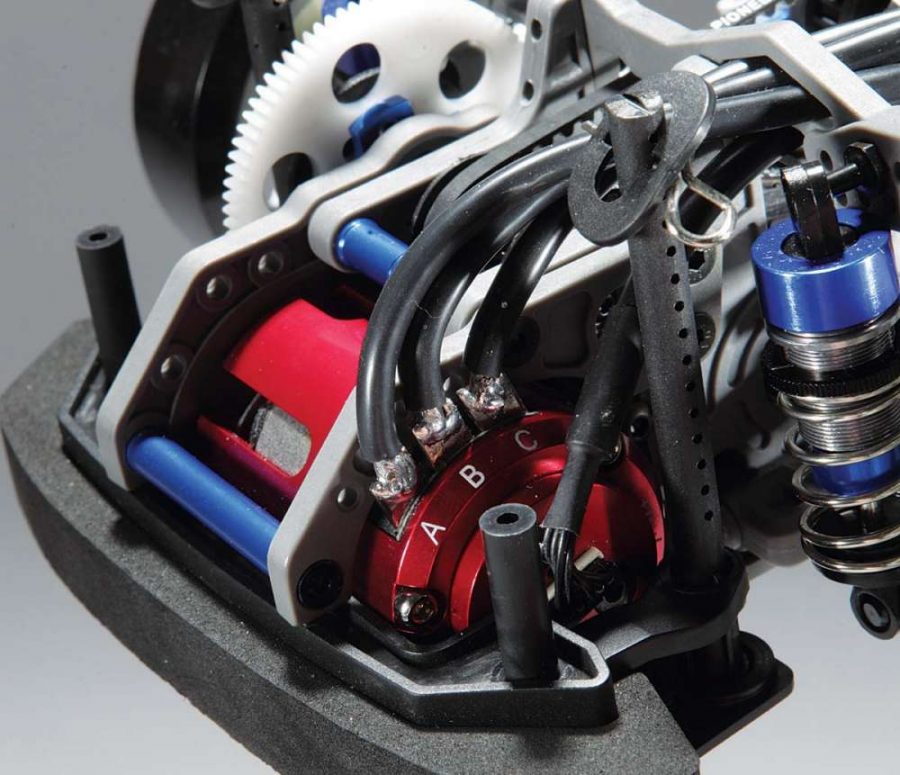
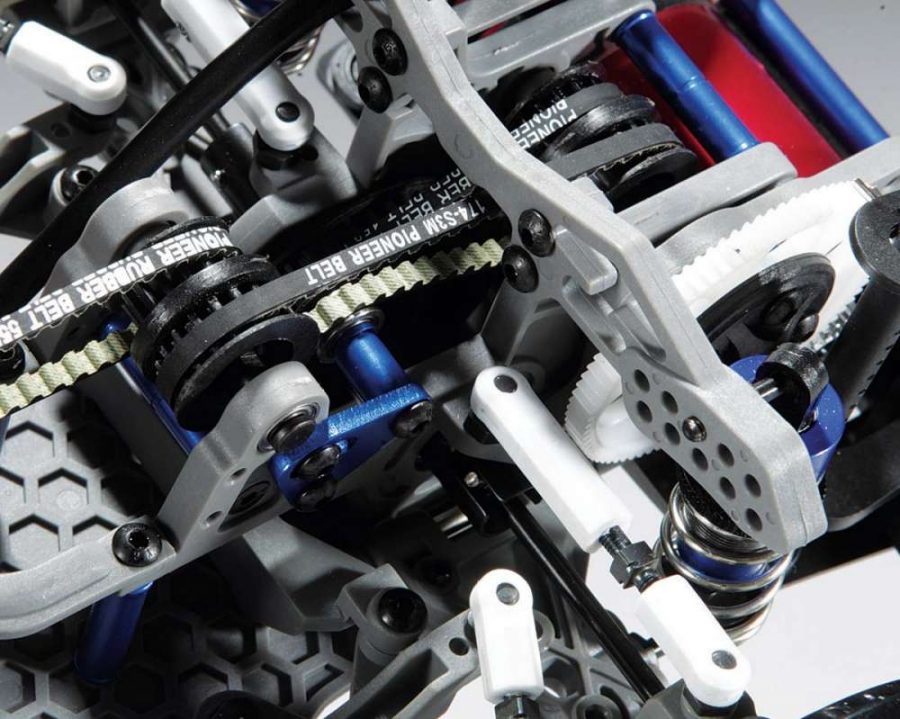
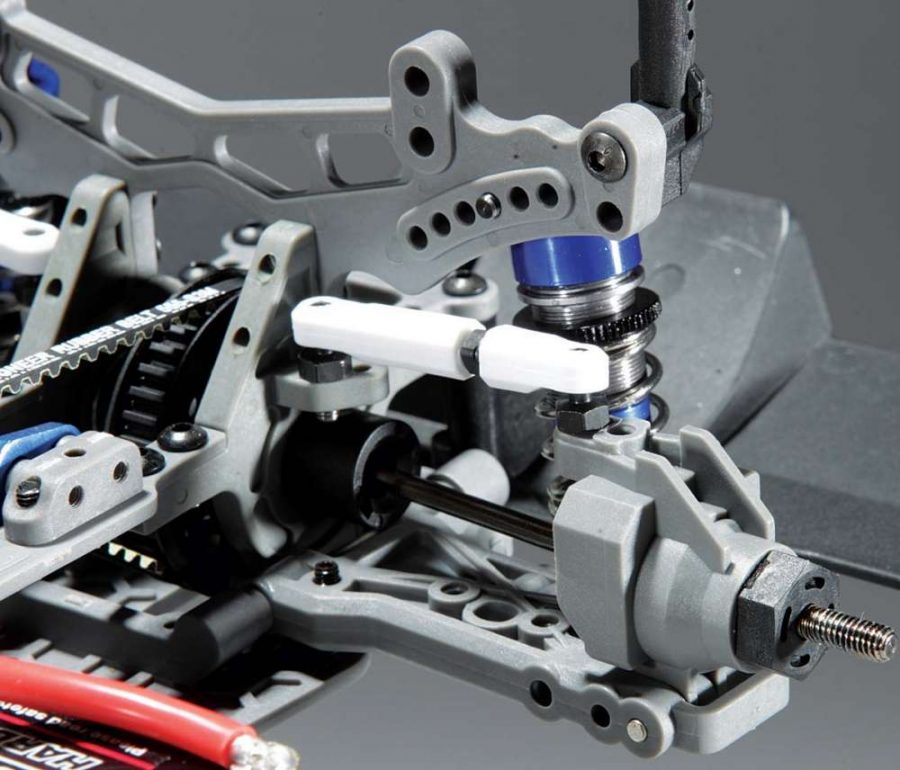






One comment
Pingback: Review of Hobby King’s Beginner 1/10-Scale 4WD Drift Car: The Evil Drift Car | Modélisme